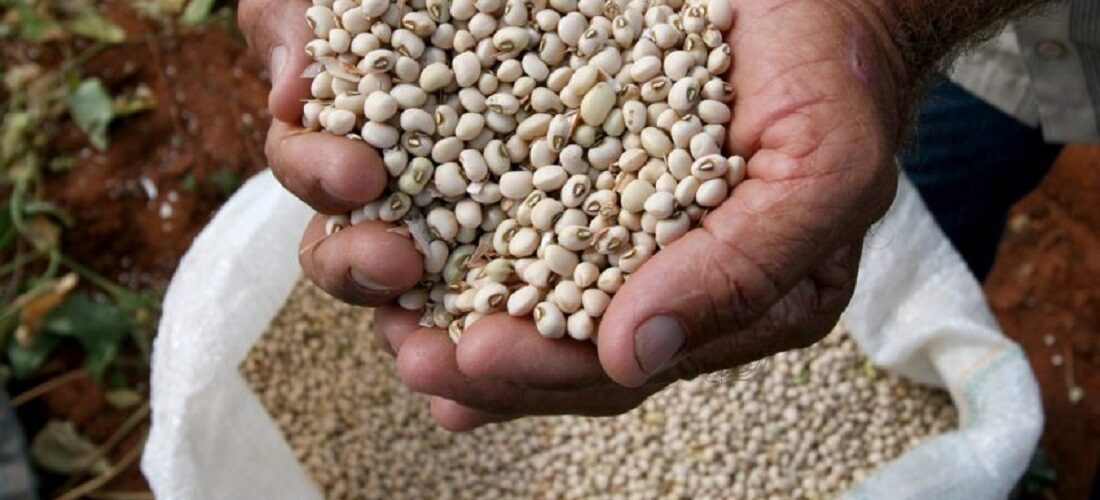
China demand may spur Brazil bean, pea exports
Dec, 05, 2022 Posted by Gabriel MalheirosWeek 202248
Brazil has always been a large pulse producer to meet heavy domestic demand. Black and brown beans are typical dishes, which guarantees domestic consumption to be almost equal to output. But in recent years, international buyers have grown interested in specific bean varieties, especially those consumed in countries like India, Pakistan and Vietnam, which has led to an increase in exports.
An increasing number of people in the US, Europe and elsewhere who do not eat meat, or have restricted meat consumption, has also favored greater demand for vegetable proteins such as dried beans, dried peas, lentils and chickpeas, either consumed directly or used as an ingredients to make products such as vegan hamburgers.
One of the most exported varieties is the mung bean. Brazil did not plant it five years ago, but started to include it in crops because of international demand, said Marcelo Luders, president of Brazil’s bean and pulse institute, Ibraf. The country exported 81,000 metric tonnes of mung beans in 2021, up from 56,400t in 2020, according to data from the ministry of economy.
Brazil plants three bean crops annually, the first in the summer from late December to late March, the second as an alternative after the soybean harvest in January and the third predominantly in irrigated areas, especially on large farms in the cerrado region, a savanna-like area with a tropical climate.
Brazil produced 2.9mn t of beans in 2021-22, according to the national supply company Conab. Brazil still had to import 100,000t to meet the most-consumed varieties from neighboring countries.
Brazil exported about 200,000t of beans in 2021, up from less than 20,000t in 2011, when it had only two exportable varieties. There are 14 export-eligible bean types being harvested in Brazil today that can go to 70 nations, Luders said. He added that exports will fall in 2022 because higher input costs and competition with other crops such as soybeans — whose prices have risen dramatically — limited bean cultivation in the traditional first and second crop seasons.
See below the track record of Brazilian exports of beans (hs 0713) from Jan 2019 to Oct 2022. The data is from DataLiner.
Brazilian bean exports | Jan 2019 – Oct 2022 | TEU
Source: DataLiner (click here to request a demo)
Chinese market
While Brazil focuses its pulse output on bean production, products such as chickpeas may start to attract more interest because of an increase in domestic consumption.
Brazil and China are negotiating a phytosanitary agreement to enable bean shipments, agriculture ministry sources confirmed to Argus. Total Chinese bean imports rose to 278,000t in 2021 from 94,000t in 2018. Brazilian beans currently reach the Chinese market less efficiently, through Vietnam.
Luders said that if China approves importing the Brazilian bean varieties, Brazil may be able to export a total of 500,000 t/yr of beans in five years, but only if it can hike overall output to 3.5mn t/yr by then. Market participants believe the forecast is viable because the mung bean cycle, for example, is only 65 days, so farmers in the central-west could continue their investments in major crops such as soy, corn and cotton and just add extra production in irrigated areasin the third crop, whose acreage is growing.
Source: Argus media
To read the full original article, please go to: https://www.argusmedia.com/en/news/2396229-china-demand-may-spur-brazil-bean-pea-exports#:~:text=Brazil%20and%20China%20are%20negotiating,market%20less%20efficiently%2C%20through%20Vietnam.
-
Meat
Mar, 20, 2025
0
Brazil’s Meat Exports to Malaysia Poised to Rise After Sanitary Agreement with Sarawak
-
Grains
Jan, 08, 2019
0
Argentinian wheat shipment rejected by Algeria
-
Sugar and Ethanol
Oct, 11, 2021
0
Scheduled sugar exports grow to 1.78 million tons
-
Ports and Terminals
Jun, 21, 2021
0
ANTAQ will hold public consultation on OGMO regulation

